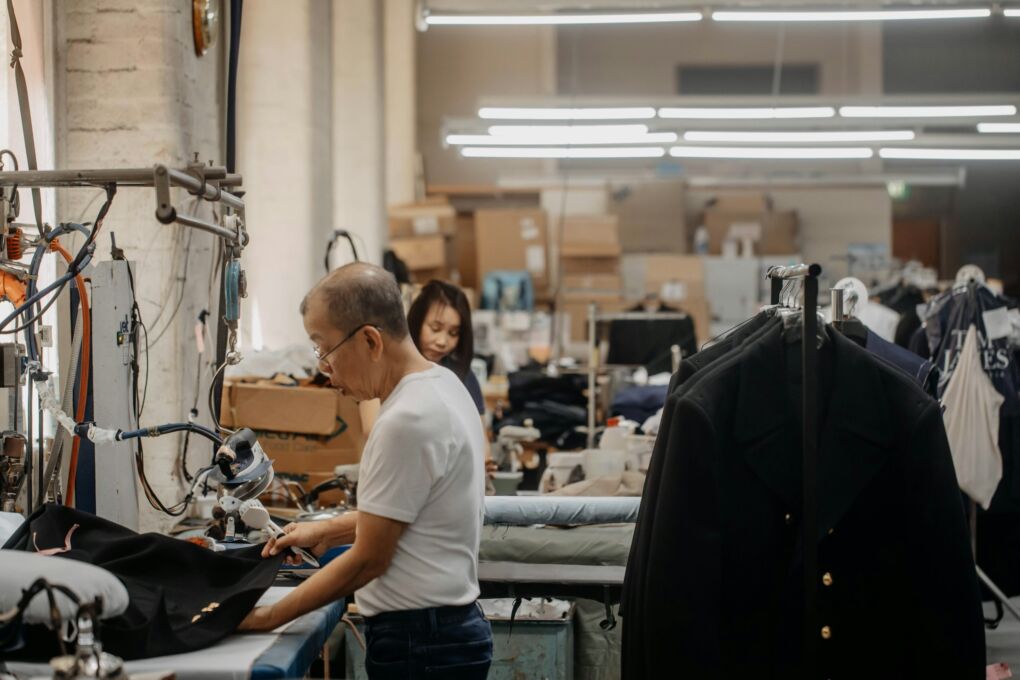The fashion industry has reinvented itself in 2025—not only through design trends and sustainable practices, but also via technology-driven manufacturing. With factories producing high-value items and IP-sensitive processes, safeguarding physically and digitally has become paramount.
This article highlights manufacturing security solutions uniquely tailored for fashion production, emphasizing how AI surveillance, fire safety systems, integrated access control, and more are shaping the secure, high-tech factories of today and tomorrow.

Image source
1. AI-Powered Video Surveillance and Analytics
Gone are the days of passive camera monitoring. Smart factories, especially in fashion, now deploy AI surveillance systems that analyze video in real time, flagging threats like theft, intrusion, or unauthorized access. Platforms like Coram offer a robust manufacturing security system that not only detects these threats with high accuracy but also integrates seamlessly with existing IP camera infrastructure.
These systems do more than record; they watch, learn, and alert. Whether it’s detecting someone sneaking raw materials into a production line or a visitor entering restricted design areas, AI-powered alerts help managers act immediately. Advanced object recognition and behavioral analytics ensure meaningful detection and reduce false alarms.
Moreover, Coram’s edge-based architecture ensures video never leaves the premises, enhancing both privacy and compliance. The result? Seamless surveillance that protects assets, enforces safety protocols, and keeps production running smoothly.
2. Fire Detection and Environmental Monitoring
Fashion manufacturing involves textiles, solvents, dyes, and equipment—all of which raise fire risk and environmental concerns. Smart fire prevention solutions are no longer optional.
Modern systems combine video surveillance, smoke and heat sensors, and environmental monitoring—like air quality alerts and chemical vapor detection. AI analytics diagnose changes, detect anomalies, and automate emergency responses.
This real-time integration not only protects inventory and staff but also ensures compliance with workplace safety codes.
3. Automated Access Control and Secure Zones
High-value fashion factories often restrict areas like raw material storage, design archives, and embroidery stations. Traditional locks are insufficient.
Smart access control systems linked to surveillance offer layered protection. Facial recognition or RFID systems restrict entry, log access, and can integrate with firewall alerts. Every entry or exit is recorded, allowing full visibility and ensuring restricted areas remain secure.
These systems also improve operational efficiency. Authorized employees can pass through quickly, while access delays signal potential risks.
4. Remote Monitoring Across Global Facilities
Fashion manufacturers often operate multiple facilities—domestic and offshore. Centralized management becomes critical to maintain consistent security standards.
Cloud-based security solutions allow centralized dashboards that offer live video, alert notifications, and control over access systems across all sites. If a threat arises at one location, or suspicious movement is tracked, managers can deploy responses remotely or escalate to local teams instantly.
This multi-site visibility supports cross-factory coordination and protects company-wide assets.
5. IoT-Enhanced Safety and Process Monitoring
Fashion factories are embracing Industrial Internet of Things (IIoT) sensors and automation to monitor machines, environment, and personnel.
Wearable tags, smart sensors, and robotics become part of the security ecosystem. They help track worker locations, detect unsafe machine interactions, or intervene when a co-bot strays into a human zone. These sensors can also trigger locks, alarms, or safety protocols automatically.
As part of a broader manufacturing security system, IIoT enables intelligent prevention and worker protection—core to Industry 4.0’s vision of integrated, safe operations.
6. Cybersecurity for Industrial OT Systems
With digital transformation comes cyber risk. Fashion manufacturers rely on connected machines, supply chain platforms, and IoT—all of which are vulnerable.
Key cybersecurity strategies include:
- Embedding security into system design (Hardware Security Modules, encryption, authentication)
- Network segmentation between IT and OT environments
- Real-time IDS/IPS monitoring to detect operational threats
In 2025, securing both physical and digital systems is essential. Threat actors increasingly target manufacturing facilities—either to steal IP or disrupt production.
7. Audit Trails, Compliance Management & Incident Response
Modern solutions aren’t just reactive—they’re also audit-ready.
Advanced security systems automatically log incidents, trigger alerts based on rule-based triggers, and feed centralized consoles with summaries. When incidents occur—whether smoke alarms, security breaches, or safety non-compliance—this intelligence streamlines incident review, insurer compliance, or regulatory investigation.
Moreover, many systems help track safety violations or track PPE compliance—tools that benefit HR, safety, and factory leadership.
Summary Table
| Key Feature | Why It Matters for Fashion Manufacturing |
| AI Surveillance & Analytics | Prevents theft, deters insider threats, enables quick response |
| Fire & Environmental Monitoring | Protects garments (flammable), maintains safe conditions |
| Access Control & Secure Zones | Safeguards IP, expensive textiles, and design processes |
| Remote Monitoring Across Sites | Centralizes visibility, enables fast multi-site response |
| IIoT Safety & Sensor Integration | Protects worker safety, integrates with smart production |
| Cybersecurity for OT Infrastructure | Ensures continuity and protects against disruptive attacks |
| Audit Trails & Compliance Management | Supports policy enforcement, incident reviews, and documentation |
Why Fashion Manufacturers Need These Solutions
The fashion industry’s competitiveness lies in its rapid cycles, high-value materials, and brand reputation. Security threats—from internal theft to cyber attacks or fire—can cause catastrophic delays and reputational damage.
By 2025 standards, the ideal manufacturing security system for fashion is one that protects assets, ensures operational integrity, supports worker safety, and maintains regulatory compliance.
Final Thoughts
As the fashion manufacturing ecosystem evolves toward smart, connected production, security must evolve too. Today’s manufacturing security solutions—rooted in AI surveillance, fire safety, access control, and cybersecurity—are essential.
Fashion leaders who prioritize integrated, intelligent security systems aren’t just protecting factories—they’re future-proofing operations, safeguarding innovation, and reinforcing trust with customers and stakeholders.
